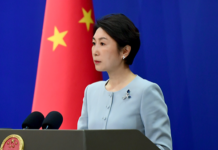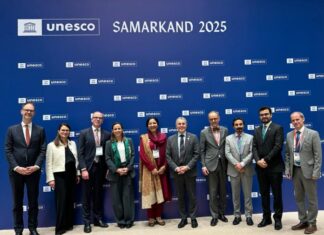ISLAMABAD: The National Electric Power Regulatory Authority (NEPRA) has said that high Transmission and Distribution (T&D) losses coupled with low recoveries are the main causes of accumulation of circular debt, reached Rs2,252,750 million by June 2022.
NEPRA made this revelation in its report on the State of Industry 2022, saying the biggest challenge for the country is to overcome the Circular Debt which is hampering the power sector, particularly investors and end-consumers at the same time.
According to the NEPRA report, the biggest challenge for the country is to overcome the Circular Debt which is hampering the power sector, particularly investors and end-consumers at the same time. The circular debt has detrimental impacts on the economic growth of the country. As of 30-06-2022, the circular debt stood at Rs. 2,252,750 million as against Rs2,280,149 million during FY 2020-21, thus decreasing the amount of Rs300 million during the year.
Besides losses, recoveries, underutilization of the assets, running defaulters, and delays in payment of subsidies are among the contributory factors towards circular debt. The financial impact of running defaulters is around Rs700 million, which is alarming as these consumers are still connected with the system and no action has been taken by the respective DISCOs to recover their billed amount from these defaulters.
Further, non-payment of subsidies by the Federal/Provincial governments promptly is another issue that can easily be settled through timely payment. The volume of circular debt can be reduced with some innovations and transformations like outsourcing the meter reading and revenue collection business in the high loss areas to minimize the loss on this account. In order to curb the existing Circular Debt, bridge financing in form of loans on the existing power supply network to the end-consumers has been obtained which is a vicious cycle. The permanent solution to the problem of Circular Debt lies in developing the efficiency-driven and financially viable power sector.
The NEPRA report also said that supplying affordable and reliable electricity to the end-consumers is to be treated as a priority for sustainable development, economic uplift, and poverty alleviation. This, in return, creates an environment of growth in electricity demand per capita; which is linked with the GDP growth of the country. According to the data submitted by DISCOs and KE, Pakistan’s per capita annual electricity consumption of 644 kWh, is among the lowest in the world, which is only 18% of the world average, 7% of the developed countries’ average, and 12% of that of China. Per capita electricity consumption is considered as one of the key parameters, reflecting the living standards of the people in a country.
This indicates that there is a lot of room for improving the living standards of the people and running the wheel of the economy to ensure sustainable growth.
Climate Change is a reality all across the globe and Pakistan is termed as one of the most vulnerable countries to its impacts. The impacts of climate change include weather shifts, an increase in temperature, heat waves, alteration in precipitation patterns, precipitation intensity, occurrence, and seasonal variations, and the resultant impact on the hydrology, affecting the power sector twofold i.e. increase in the electricity demand particularly for cooling, and reduction in electricity generation from hydropower.
Due to this, the reliance on expensive fossil fuel-based power generation was increased during FY 2021-22. There is a dire need to take climate change mitigation into account for future power system integrated planning and management.
Given the situation, it is of paramount importance that the development of the power sector must follow an integrated, harmonized, and a holistic planning approach. A robust planning process, based on a scientific methodology, needs to be in place for the network expansion, improvement, and delivery. It is imperative that all stakeholders of the power sector must realign their business models for the improvement and better utility services to the end-consumers. They should embrace the innovation in policies, technology, and financial models to transform the electricity sector into a better performing and sustainably growing sector of the economy.
As per NEPRA report, low utilization of efficient plants which was compensated through expensive generation had an additional financial impact of Rs100 billion on the end consumers.
Guddu 747 MW is being operated on indigenous gas that has a low generation cost of Rs6.5/KWh, but the plants’ utilization remained 41 percent only, so missed volume was purchased from costlier power plants, the delivery cost of which was as high as Rs23.49/KWh which resulted in the loss of around Rs54 billion
One unit (624 MW) of the coal-based power plant of China Power Hub Generation Company (CPHGC) could not supply cost-effective electricity to the system on account of damage to its transformer during the period from July 14, 2021, to January 6, 2022. Non-availability of power from the plant resulted in a financial loss of Rs30 billion.
Thar coal-based two power plants of Engro PowerGen Thar (EPTL) from March to May 2022 remained out of the system. The loss of generation was upset by costlier power plants. The financial impact of the forced outage of EPGL’s units during the year is calculated at around Rs16 billion
The regulator noted that fuel prices jumped three times due to an increase in global prices coupled with the devaluation of the rupee against the U.S dollar that raised the cost of generation, resulting in unparalleled monthly fuel charges adjustments (FCAs), thus eventually impacting the bills of the end consumers. In view of the unprecedented increase in FPA, the Government gave relief of Rs5/kWh on FCA for a period of four months from March, 2022 to June, 2022. The impact of this relief package in the form of subsidies was around Rs126 billion.
The National Transmission and Despatch Company (NTDC) has been allowed 2.5 percent transmission and transformation (T&T) losses for FY 2021-22. The actual T&T losses reported by NTDC for the FY 2021-22 are 2.63 percent with lost units of 3,696 GWh having a cost effect of around Rs 72 billion.
The 660 kV High Voltage Direct Current (HVDC) transmission line to carry 4000MW from Matiari to Lahore, remained underutilized due to a lack of required generation capacity during FY 2021-22 and is causing a financial burden on end-consumer in terms of per unit cost of electricity. The capacity payments of PMLTC during the period Sept 1, 2021, to June 30, 2022, were Rs49 billion.
According to the data submitted by DISCOs and KE, Pakistan’s per capita annual electricity consumption of 644 kWh, is among the lowest in the world, which is only 18 percent of the world average, 7 percent of the developed countries’ average, and 12 percent of that of China. Per capita electricity consumption is considered as one of the key parameters, reflecting the living standards of the people in a country.
The NEPRA’s State of Industry Report, 2022 further said that during the year, the allowed transmission of distribution (T&D) losses for the DISCOs were 13.41 percent whereas actual losses were 17.13 percent. Due to the difference of 3.72 percent, the financial loss on this account has been worked out around Rs113 billion.
In addition, NEPRA determines the revenue requirement on 100 percent receivables. During the FY 2021-22 the receivable amount in terms of percentage was around 90.51 percent thus incurring the loss of Rs230 billion of the billed amounts. The overall impact on account of additional T&D losses and less recovery works out as Rs343 billion. This whole contributes to the accumulation of circular debt.
It noted that the performance of the DISCOs is the major concern due to higher T&D losses and less recovery affecting the cash flow with the CPPA-G for onward payments to the transmission and generation companies.
It has been further observed that due to the load shedding the recovery of the Capacity Charges from the respective feeders is also lost which is another issue for the power sector.
The governance issues in DISCOs are required to be addressed to reduce their losses, which are resulting in enhancing the circular debt. However, no significant improvement has been seen on the part of DISCOs in this regard.
DISCOs recoveries during FY 2021-22 was 90.51 percent as compared to 97.30 percent during FY 2020-21, i.e. almost 7 percent less than the previous financial year.
Necessary steps are required for corrective measures and improvement in the distribution system. The Government being the owner of the DISCOs may adopt different strategies which may include but not limited to the option for the outsourcing of high AT&C loss feeders. High T&D losses and low recoveries are the main causes of the accumulation of circular debt which stood at Rs. 2,252,750 million as of 30-06-2022. The losses and recoveries of DISCOs, particularly TESCO, HESCO, SEPCO, PESCO and QESCO need to be improved.
During FY 2020-21, the receivable amount of DISCOs including KE was around Rs. 1,398,194 million, whereas during the FY 2021-22 the receivable amount is Rs. 1,680,426 million, showing an increase of Rs. 282,232 million.
Further, non-payment of subsidies by the Federal/Provincial governments promptly is another issue that can easily be settled through timely payment. The volume of circular debt can be reduced with some innovations and transformations like outsourcing the meter
It is pertinent to mention that the State of Industry Report 2022 (SIR-2022) captures and presents the status and performance of various segments of the electric power sector i.e. generation, transmission, distribution and supply, during the FY 2021-22. The SIR-2022 provides a snapshot of developments, and delivery of sectoral players, identifies weaknesses of the sector, and suggests improvements in each segment of the electric power services. The SIR-2022 has highlighted various challenges that were faced during the FY 2021-22.






















